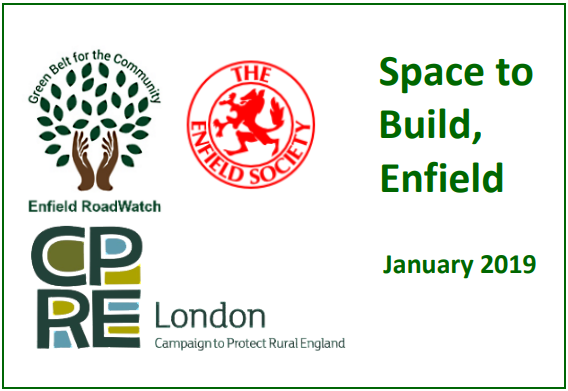 Ahead of the deadline for submitting responses to the draft Enfield Local Plan, three campaigning groups have come together to release a report which questions the need to build on Green Belt land in order to provide sufficient new housing in the borough.
Ahead of the deadline for submitting responses to the draft Enfield Local Plan, three campaigning groups have come together to release a report which questions the need to build on Green Belt land in order to provide sufficient new housing in the borough.
CPRE London (a branch of the Campaign for Rural England), Enfield RoadWatch and the Enfield Society have today published a report under the title Space to Build, Enfield.
The three groups have carried out analysis of the potential for building new housing on already developed land at sites throughout the borough, concluding that there is more than adequate space without building on any Green Belt land.
According to Alice Roberts of CPRE London, “Our report shows that Enfield Council should not even be considering building on Green Belt. We’ve already found space for 37,000 new homes and that’s really just a start."
The groups argue that building housing at Crews Hill would be the worst possible option, as it would only provide low-density, mainly expensive homes, at the cost of destroying the area's popular garden centres - "an important piece of Enfield's economy which cannot be replaced." They call for a positive vision for Crews Hill, as a centre for horticulture, which recognises the major potential for employment and the major opportunity for Enfield’s economy.
Alice Roberts says that there are much better options: "Large ‘opportunity’ sites, like the Southbury area, can and should be ‘masterplanned’ for high quality, high density (though not high rise) housing developments which are ‘walkable’ and where space is used for housing rather than lots car parking, as happens with low-density Green Belt development. This type of high density housing is more affordable for young people and people on lower incomes – people who are also more likely to rely on public transport and are less able to afford a car. It can also include office space, schools, shops – everything people need."
The detailed report urges the council to resume efforts to improve rail services in the east of the borough and to consider turning areas currently used as retail parks into mixed developments, arguing that, for instance, more intensive use could be made of the large expanses of land taken up by single-storey supermarkets and associated car parking.



